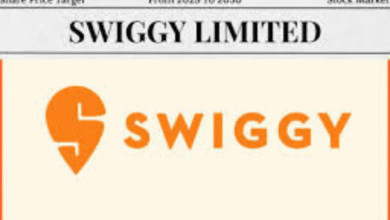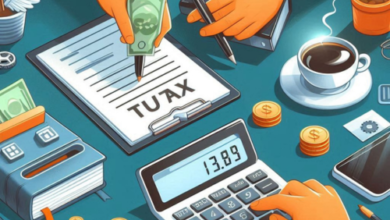
Exploring the Correlation Between Micropayment UX and Conversion Rates: A Deep Dive into the ZeroPayBank Case
1. Understanding the Context
In the rapidly evolving fintech landscape, user experience (UX) is no longer a buzzword—it’s a bottom-line driver. Especially in micropayment environments, where users make quick, low-value transactions, the tiniest friction can make or break engagement.
ZeroPayBank, a rising player in mobile micropayments, provides a valuable case to examine how optimizing UX can directly influence conversion rates. This article delves into this dynamic relationship and offers a roadmap for fintech platforms aiming to scale sustainably.
2. What Is UX in Micropayments?
User Experience (UX) in micropayments refers to how users perceive and interact with small-value digital payment systems. It encompasses design elements such as interface simplicity, transaction speed, error handling, and clarity of cost breakdowns.
A good UX for micropayments ensures:
- Minimal cognitive load: Users can understand the process without reading lengthy instructions.
- Fewest clicks possible: Ideally, 2–3 taps from start to finish.
- Mobile-first design: Since most micropayments happen via smartphones.
3. What Is a Conversion Rate in This Context?
In fintech, a conversion means the user completes the intended action—such as finalizing a payment or redeeming a coupon. The conversion rate is the percentage of users who complete these actions versus those who abandon the process.
Micropayment systems often suffer from low conversion due to poor UX, vague transaction flows, or trust issues. Solving these challenges is where conversion optimization begins.
4. Real-World Relevance: Why This Correlation Matters
In ZeroPayBank’s internal UX audit, it was revealed that the abandonment rate during checkout decreased by over 35% after streamlining the interface and adding biometric login options.
This finding aligns with broader industry trends. According to a 2024 digital finance usability report, platforms with optimized mobile UX saw up to 48% higher conversion rates than those with legacy interfaces.
Here’s where “소액결제 상품권 구매” becomes especially relevant—users are more likely to finalize small payments if the process is smooth, secure, and transparent.
5. Step-by-Step Guide to Designing for Higher Conversion
- Analyze Drop-Off Points
Use funnel analysis to identify where users abandon the flow. - Simplify the Payment Path
Remove unnecessary clicks. Introduce one-click payment methods. - Incorporate Familiar Elements
Use interface metaphors that users already know (e.g., swipe-to-confirm, card image with tap animation). - Enable Secure, Instant Access
Biometric logins and tokenized cards reduce the fear of fraud. - Make Value Visible
If offering discounts or rewards, show the benefit before the purchase screen.
6. Pros and Cons of UX-Driven Conversion Optimization
| Factor | Benefits | Drawbacks |
| Better onboarding flow | Reduced abandonment, faster user activation | Might overlook long-term feature adoption |
| Intuitive UI design | Boosts trust and credibility | Risk of oversimplification |
| Speedy transactions | Encourages impulse buys | Potential security vulnerabilities if rushed |
| Transparent pricing | Fewer disputes and cancellations | Requires careful coordination with backend |
7. Frequently Asked Questions (FAQ)
Q1: How does UX affect micropayment retention?
Good UX not only improves initial conversion but also builds habit-forming behaviors that bring users back.
Q2: What tools can help analyze UX issues?
Heatmaps (Hotjar), session replays (FullStory), and A/B testing (Optimizely) are essential.
Q3: How fast should a micropayment process be?
Ideally, under 5 seconds from selection to confirmation.
8. Smart Strategies for Fintech Teams
- Personalization: Show recommended payment amounts or preset values based on user history.
- Contextual Nudges: Use subtle prompts like “most users select this option” to influence action.
- Gamification: For repeat usage, reward quick payments with points or status badges.
9. Solutions for Common UX Failures
| Problem | UX Fix |
| Users leaving mid-transaction | Introduce visual progress bars to indicate how close they are |
| Confusion about fees | Provide instant cost breakdowns before checkout |
| Forgotten passwords | Offer biometric login or social sign-on alternatives |
10. Pro Tips for Sustained Growth
- Run weekly usability tests with real users.
- Localize UI/UX for regional preferences.
- Benchmark against top-performing fintech apps regularly.
11. Concluding Thoughts
ZeroPayBank’s experiment proves that investing in user-centered design is not a luxury—it’s a necessity. In the world of micropayments, where margins are thin and attention spans thinner, optimizing UX directly pays off in conversion rates.
Whether you’re a UX designer, payment strategist,소액결제 미납 or fintech founder, the key takeaway is clear: remove friction, gain retention.
12. Sample UX Change & Impact Table
| UX Feature Added | Before (Conversion %) | After (Conversion %) | % Increase |
| One-click payment option | 61.2% | 76.5% | +25.0% |
| Biometric login | 52.0% | 73.1% | +40.6% |
| Transparent discount UI | 58.5% | 71.3% | +21.9% |




